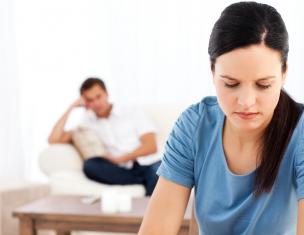Lipstick is an integral part of makeup, a permanent resident of a woman's cosmetic bag. Not a single image can do without a decorative agent. There are many lipsticks on the market that differ in characteristics and appearance. But there is a drawback in the products - preservatives, harmful chemicals. If the composition raises concerns, fear of health, you can make a matte lipstick, balm or glossy gloss yourself at home.
The basis of decorative lip paint is fats, waxes, oils. Three components are responsible for the main qualities:
- wax - plastic texture, strength, ideal shape. Thanks to its presence, the lip is evenly colored. The ingredient is the strongest allergen. It is replaced with an artificial analogue;
- fats - reliable protection from wind, moisture loss, they are responsible for hardness;
- oils - provide care, nutrition. The composition contains avocado, coconut, castor, and others.
Additional components are petroleum jelly, lanolin, mineral oils. To extend the service life, the fat base is diluted with preservatives and antioxidants. Silicate derivatives and polymers are added to give durability and gloss.
What you need to do at home
Home cosmetics are incomparable in quality and usefulness with products from the mass market. You define the content of the components, the properties of the tool. This is an opportunity to save money, but not lose.
Cooking requires materials:
- capsulated vitamins and oils in liquid form;
- palm wax, beeswax, candelia wax or hard oils - coconut, cocoa, shea;
- flavors. The best option is vanilla. It is recommended to choose mild aromas;
- dyes. Ready-made or herbal ingredients. You can experiment and try gouache, baby crayons, eye shadows, food colors, mineral pigments.

Of natural dyes, the following options are convenient to use:
- alkane root - gives the formulations a deep dark red and burgundy color;
- turmeric - gives a bright copper tint;
- cocoa powder and natural chocolate - allow you to create rich bronze shades;
- cinnamon - suitable for creating trendy reddish brown tones.
To make the lipstick heal with your own hands, take care of the lips, the following extracts are added to it:
- mint and cinnamon - cause vasodilation, improve microcirculation, make lips plump, voluminous;
- sea buckthorn - heals wounds, relieves peeling, gives the product a golden glare;
- castor oil - necessary to combat dryness, for extra shine.
A properly prepared product has the following proportions: wax 30%, solid oils 40% and liquid components 30%. Depending on the goals, the composition is changed and adjusted.
Required tools:
- stick or spoon made of wood;
- several pieces of measuring syringes;
- glass container with a measuring scale;
- pipettes;
- capacity for a water bath;
- sharp knife;
- teaspoon;
- jar for storing the finished product.

Cooking technology
Natural dye is brewed according to the instructions. The technology for making lipstick, regardless of its color, texture is standard.
- Prepare a water bath. Place wax, liquid, solid oils. An important condition: the components must melt, but not boil.
- Pour vitamins, aromatic additives, pigment, sweetener (optional) into the liquid wax composition.
- Stir the mass, draw up with a syringe.
- Wait until it hardens inside the tube, cut off the end with a knife, squeeze it into a storage container. To prevent the product from spreading, place the tube vertically, and place foil or paper on the bottom. Do not pour to the brim, the mass increases as it cools.
- Wait until it hardens completely. If there is no time to wait, place the product in the refrigerator.
This is a step-by-step instruction on how to cook a homemade product, but each method has deviations.
DIY lipstick recipes
Making cosmetics with your own hands is interesting. You can make your wishes come true, correct the shortcomings of purchased funds. The main thing is to choose the right recipe and ingredients.
Making hygienic lipstick
It is easy to make homemade hygiene balm. This is the simplest vitamin-based recipe.
- Place wax on a water bath - 3 grams, the same amount of jojoba and cocoa butter - 4 grams. Introduce a couple of capsules Aevit or vitamin E 2-3 drops. Add aromatic additives, sweet ingredient if desired.
- Healing balm. Manufacturing begins with a water bath, in which cocoa extract, wax, 10 grams of each substance are cooked. Add vitamin E 5 ml to the liquid, 5 ml jojoba, 1 drop of lavender, tea tree or orange oil. Place in a syringe, wait for the filling to grasp, then squeeze into a storage tube.
Petroleum jelly or paraffin can be used to replace oils. Vaseline, paraffin composition is prepared according to the general technology.

Lipstick of different colors
A colored product is obtained by combining pigments. You can use ready-made recipes or develop your own mixes using bold green, black, blue, and other dyes.
- Red lipstick. Melt cocoa butter, 10 grams of wax. After turning into a liquid state, pour 1 drop of food coloring into the container or add beetroot powder. If the paint has a light shade, then an increase in the amount of pigment will help to achieve a dark one. Prepare the mixture, stirring until a plastic consistency;
- chocolate dye. Steam shea butter, cocoa, wax in a volume of 10 grams. The proportions are equal. Combine the mixture with 2 ml of wheat germ oil. with avocado extract 2 ml. Introduce natural dark chocolate or cocoa powder. Add 2-3 drops of orange or ginger ether. Change the composition depending on the color tone - milky or rich brown. Cooking and pouring according to the general technology;
- matte product. Put beeswax, candelilla wax to boil, 10 grams each. Pour in castor oil, jojoba, 5 ml each. Mix separately titanium dioxide 10 grams, wheat germ oil 5 ml, zinc oxide 80 ml. Combine both mixtures, keep in a bath until complete stirring. Place in a storage tube.
Rules for the use and storage of natural lipstick
An aspiring cosmetics manufacturer should know how to prepare, how to extend the shelf life of his creation.
- Handle the handy tool. You can use a regular antiseptic or rubbing alcohol from home.
- Use fresh ingredients.
- Keep away from hot objects and heat.
In order for a long-lasting bright lipstick or gloss to lay down evenly, it is recommended to periodically do sugar peeling on the lips.
Every woman can make hygienic lipstick or pigment lipstick. Home is a place for creating useful and beautiful cosmetics. Lipstick made of petroleum jelly, wax, oils, vitamins can be beautiful and original, have a unique shine or shadow. Its use is beneficial for the skin, facial beauty.
What wonderful epithets men have invented to describe the beauty of women's lips! They are called sugar lips, compared to corals, rosebuds and the like. But no poet has yet glorified the beauty of dry or chapped lips.
Spring is just around the corner, but the cold and windy winter has weakened the body, which is in dire need of vitamins. Lips become dry, peeling and dehydrated. At this time, both hands need vitamin support, but especially lips, which require special attention. Almost all women use hygienic lipstick and spend money on buying it.
Now about liquid oils:
- Almond oil is nutritious, saturated with vitamin E, used in inflammatory processes of the skin, prevents cell aging.
- Jojoba oil protects against sun damage and is a good moisturizer.
- Sprouted wheat oil helps to improve blood circulation, heal wounds, and slows down skin aging.
- Avocado oil is ideal for aging skin.
- Macadamia oil - has a smoothing and softening effect, effective against flaking.
- Grape seed oil is an emollient and moisturizer that gives the skin a healthy color.
- Evening primrose oil - strengthens the elasticity of the lips, emphasizes their contours, contains essential fatty acids.
You can make lip balm using the following recipe:
Cocoa butter - 3 parts, apricot kernel oil - 3 parts, Shea butter - 3 parts, Candelabra wax - 1 part.
We mix and heat up all the oils so that their temperature becomes the same. Dissolve in a water bath until all lumps are removed.

Pour the balm with a syringe into tubes frozen in the refrigerator. We put them back in the freezer for a few hours, then take them out and leave them for a while in a room with room temperature.
For those who have never dealt with making homemade cosmetics, it is better to start with one lipstick to assimilate the technological process and acquire the corresponding skills.
A simple recipe for 1 serving of hygiene balm
To make just one tube, you can take: half a teaspoon of beeswax (3 grams), one teaspoon of cocoa butter (2 grams), one teaspoon of jojoba oil (5 ml), evening primrose essential oil (or another, of your choice) - 2 drops. The cooking process is the same as in the recipes above.
If you have something to weigh the components - this is great, if not - use a measuring spoon, although a good and high-quality result may not work on the first try, you need skill.
Pomegranate juice lip balm recipe
Mix the ingredients in a small, clean jar and set aside for an hour. The made balm will soften and moisturize the lips.
Anti-freeze hygienic lipstick recipe
Peppermint oil - 8 drops, olive oil - one tablespoon, beeswax (in granules) - one tablespoon are mixed according to the technology you already know. Drops are well measured with a pipette. For storage, select a clean, dry glass jar.
The chapstick you make can even be colored. To do this, use the addition of beet juice or chocolate.

The shelf life of your lipstick is directly dependent on the shelf life of its constituent components. The shelf life of any essential oil starts from the day the bottle was opened. That is, if you used an open bottle, remember when you opened it.
The general rule for lipsticks is to store for up to four months after opening the package.
Some representatives of the beautiful half of humanity do not trust the manufacturers of decorative cosmetics and are increasingly thinking about how to make lipstick with their own hands. I must say that this process is not at all complicated.
The leftovers are in action!
Surely every woman has stocks of running out or unsuitable lipstick, which is a pity to throw away and can no longer be used. So what do you do in this case?
The idea lies on the surface. You can simply collect all your tubes and melt their contents. The result can be something exclusive and interesting. How to make lipstick at home? It's very simple!
You will need:
- candle;
- the remains of lipstick;
- scoop;
- small jar.
You can also take some ending lip balm or did you know that any woman can do this? It's very simple.
Process description

- First of all, remove the contents of the tubes. Then place this mass in a ladle. If you are using leftovers, remember that you need to take it a little. Better to take two parts of lipstick and one part of gloss.
- Light a candle and bring a ladle. The lipstick should melt. At this stage, do not forget to mix the resulting mass.
- Take a vial and pour the contents of the ladle.
- As soon as the lipstick has completely cooled down, you can safely use it. This is the easiest way to make lipstick.
What can you make lipstick from?
How to make lipstick not only from the remains of various cosmetic but also completely from scratch? To do this, you need to take thirty percent of liquid oils and wax, as well as forty percent of solid oils. This formula does not take into account the content of aromas and dyes, as these ingredients are always added at the final stage of preparation. In each case, their number will depend on your individual preferences.

- Prepare all the ingredients required by the recipe and place them in a water bath or heat over a candle (as described above). In no case should you bring to a boil! Once the wax and oils have melted, you can safely remove them from the heat.
- Then add some color pigment and flavor (optional).
- Do you like chestnut shades? Then use natural products and spices as coloring pigments: cinnamon, turmeric, cocoa.
- it will work if you add to the base Take a medical syringe and fill it with uncooled lipstick, you do not need to put on the needle, because the mass is unlikely to pass through its thin hole. Cut off the plastic tip and squeeze the contents into a tube prepared in advance, but not to the very top, as the mass will harden and slightly increase in volume.
- To make the lipstick harden faster and can be used, place the container in the refrigerator for literally a few minutes.
Making colorless lipstick
Now let's start preparing the hygienic lipstick. To do this, take a teaspoon of beeswax or palm wax, rub it, melt together with half a teaspoon of grape seed oil or wheat germ oil. Don't forget about pigments! Add four teaspoons of mica and a spoonful of dioxide or Slightly thicken this mixture over the fire and remove. Let it cool a little and add half a tablespoon of vitamin E.
Another recipe: natural lipstick
Now let's look at how to make lipstick in a different way. Heat 3/8 cup olive oil and a large spoonful of jojoba oil, add a spoonful of alkane powder. Keep on fire and strain. Melt a teaspoon of beeswax separately and add it to the strained mass. Once the mixture has cooled slightly, add nine drops of rose oil and stir.

How to make a matte lipstick
Melt a teaspoon of candelilla and the same amount of beeswax, add half a teaspoon each of jojoba oil and castor oil. Put 8 tsp in some other container. zinc oxide or 1 tsp. titanium dioxide. Pour in half a tablespoon of wheat germ oil here and mix well. We add this mass to the one that was prepared earlier, and keep them in a water bath until they mix with each other. That's the whole secret of
DIY red lipstick
Many women are interested in the question: how to make red lipstick? It can be prepared by mixing heated wax, coconut oil and shea butter. We take all the components in equal proportions. As a dye, we will use a couple of drops of beetroot powder or a drop of food coloring.

There is another way to prepare red lipstick. Melt a large spoonful of wax, add half a tablespoon of lanolin and the same amount of castor oil, mix and pour in 1.5 tbsp. tablespoons of beet juice (with a pipette). We put the finished lipstick into a syringe and put it in the refrigerator.
So you learned how to make lipstick at home. Do not be afraid to experiment, try mixing various natural dyes, because this way you can create some new beautiful shade. If you are not used to taking risks, then add a little of your favorite shadows to the mass and mix well. This lipstick will keep great and will not delaminate over time. But you are unlikely to throw such your own creation somewhere far away and forget about it. After all, self-made cosmetics, taking into account your own preferences, will be pleasant to use.
Not a single modern woman, and even more so a girl, will go public without at least touching up her lips. And although the market for cosmetic products offers a lot of lipsticks in a huge assortment, it is not always possible to find exactly what you need. In addition, it is believed that lipsticks from many manufacturers contain chemicals that cause a change in the natural color and premature aging of the lips.
Many people want the cosmetics they use every day to be made only from natural ingredients and to give the skin of the face beauty and health. This is probably why in recent years, do-it-yourself cosmetics are gaining more and more popularity. If earlier it was mainly about soaps, scrubs and masks, now there are excellent recipes for cooking at home. Such lipsticks reach a fundamentally new level, because they turn from decorative cosmetics into therapeutic and prophylactic ones.
Self-made lipsticks are often supplemented with oils to eliminate the problem of unnatural color and dry lip skin. Also, their regular use significantly reduces the risk of viral colds on the oral mucosa.
And most importantly, making such a lip balm is not difficult. All you need is beeswax, jojoba oil, cocoa butter, vitamin E capsules and essential oils. The bowl is used oil of orange, tea tree, geranium, lavender, almond and tangerine.
First you need to take a teaspoon of beeswax and melt it in a water bath. Without waiting to boil, remove from heat and add a teaspoon of cocoa butter and half a spoonful of jojoba oil. Mix everything well.
The presence of a balm with vitamin E in the lipstick is very important. It is best to use the Aevit preparation sold in every pharmacy - it will be enough to add the contents of two or three capsules to the resulting mass. At the final stage, drip a few drops of the selected aromatic oil and let it cool at room temperature. To give the resulting mass the appearance of a rod, you can pour it into any tube of used lipstick and put it in the refrigerator for ten minutes.
All components of the lipstick are not chosen by chance. All of them are great for the prevention of viral herpes. The wax, which forms the basis of lipstick, relieves itching, inflammation, and also heals and dries sores. Jojoba perfectly moisturizes, and most importantly nourishes the membrane of the lips. Cocoa butter, in addition to moisturizing and nourishing, also actively protects against the symptoms of chapped lips. All of the above are excellent antiseptics. And, of course, vitamin E is the guarantor of long youth and freshness of the mucous membrane of the lips.
DIY lipstick has a ton of positives. If desired, you can add a natural dye to it to give it color. As for contraindications, then, perhaps, only the individual intolerance of one component comes to mind. But if suddenly such a problem arises, then it can be solved simply by replacing this ingredient. Even the base of the lipstick, beeswax, can be easily changed to the base of a simple hygienic lipstick.
Lipstick recipes and direct preparation
Before starting work, prepare the following equipment and ingredients:
- pipettes or measuring syringes
- spoons
- small glass containers
- lipstick tubes or jars
- dyes
- beeswax or any other wax
- oils (sweet almond oil, hazelnut oil, jojoba oil - of your choice)
- odorants - if desired
Mixing colors and testing
Once you've got all of your ingredients for your lipstick, it's time to start designing your perfect color. There is a fairly simple way to do this. Designing the perfect color is a trial and error process. Luckily, as long as your recipe is oil-free, you can melt, re-melt, and melt your ingredients over and over again without compromising the balm.
Some basic rules:
If you want an opaque matte color, you definitely need titanium dioxide.
If you want a soft, translucent color, stay away from titanium dioxide, and add iron oxides more sparingly.

In the photo you see a color sample for a sample, created from a cosmetic mica with titanium dioxide (left) and without it (right). They both look completely different on the lips. Also notice the air bubbles in the titanium dioxide lipstick on the left? This is easily solved with a regular hair dryer.

This photo shows the power of brown. I added some brown iron oxide to the container on the right. It gives good color saturation and opacity. Note that the brown pigment really does soften the shimmery miki in the lipstick.

To achieve this color, I used a lot of pearl white mica (almost 1: 1 mic ratio with lip balm: for 50 g of balm I had to add at least 1 teaspoon of pearl white mica), Cellini Red Mica and Merlot Sparkle Mica. Cellini Red Mica and Merlot Sparkle Mica are here for 1/2 tsp.
Lightweight translucent lipstick
55 grams of beeswax
55 g grape seed oil
25 gr. wheat germ oils
1 tsp zinc oxide or titanium dioxide - add if desired
4 tsp miki (mix and match colors to your liking and preference)
Zinc oxide will give your lipstick an opaque, matte finish. If you only use miki, you will end up with a clear lip balm.
Melt the wax in a water bath and add grape seed and wheat germ oils. Add your pigments and miki and mix well. Wait until your mixture begins to thicken a little and pour it into jars or lipstick tubes.
Matt lipstick
Due to the presence of Kandedil wax in the composition, this lipstick has a denser and waxy texture compared to the previous recipe. Candedilla wax also promotes better color hold and color retention on your lips.
Fat phase
110 g castor oil
110 g jojoba oil
140 gr beeswax
25 grams of Kandedil wax
7 grams of wheat germ oil
Pigment phase
8 tsp cosmetic mik or pigment
1 tsp titanium dioxide - optional
5 grams of castor oil, olive oil or wheat germ oil. (Hint: Castor oil will add more shine than olive oil or wheat germ oil)
Melt the wax in a water bath and add castor oil and jojoba oil. Combine miki and liquid oil of your choice in a separate container. Stir well and check for any lumps. Add the pigment phase to the melted oily phase and mix thoroughly. Remove this mixture from the water bath and wait until it begins to thicken a little, stir again well (to evenly disperse the pigments) and pour it into jars or tubes for lipsticks.
Homemade lipstick is becoming more and more popular, because it contains only natural and safe ingredients, and it can be easily made at home. This article will show you some great homemade lipstick recipes and how to make lipstick at home.
As you probably know, lipstick is a common cosmetics used to enhance lip color. It contains various pigments, oils and waxes that not only create different color options, but also often provide protection for the skin of the lips. The lipstick is available as a stick inside a tube or as a liquid and is applied using an applicator brush. It has a positive effect on the skin of the lips, has softening, moisturizing and antioxidant properties. Studies have concluded that soft lipsticks lead to positive emotional responses in women.
Lipstick history
Lipstick has always been a part of fashion, but the history of lipstick dates back to the ancient Egyptians who used henna to paint on their lips. According to The Cultural History of Lipstick, the Egyptians knew how to make lipstick. They used a mercuric plant dye called fucus, which contained algin, iodine, and brommannite, resulting in a reddish purple color. However, this combination was potentially poisonous.
Nowadays, many popular brands use harmful toxins, parabens and many other dangerous ingredients in the production of lipstick. The American channel CNN reported that lead hazardous to health was found in many lipstick brands several years ago. In 2007, the Safe Cosmetics Company conducted the Kiss Poison study. The study found that lead was present in over 60% of the 33 lipsticks tested. This substance was not indicated in the composition of the product, because its amount is very small. However, when applying lipstick and its daily presence on the lips, we eat it in a year in large quantities. This is another reason to learn how to make lipstick because you can avoid using hazardous chemicals on your skin.
Back to history, lipstick has a pretty amazing history. At certain times in history, makeup, including lipstick, was considered unacceptable. The movement, led by Thomas Hall, an English pastor, declared that makeup or face painting is the work of the unclean, and that women who put makeup on their lips try to lure others in order to ignite the fire and flames of lust in the hearts of those who throw their gaze.
The British Parliament banned lipstick in 1770, arguing that women who seduce men with makeup could be tried for witchcraft. Even Queen Victoria declared makeup impolite and vulgar, and only actors and prostitutes were allowed to wear it. Makeup was a serious offense and was banned for quite some time.
Later, thanks to the film industry and the need to raise the country during World War II, lipstick and face powder finally won respect. In addition, it even became a patriotic duty of women, since then the lipstick industry has only continued to grow.
Now that you've learned a bit of history, you might be wondering how to make your own natural lipstick. Making your own lipstick at home is easy, and you know what ingredients you are putting in to create a safe product.
Note: If you're in a hurry, you can simply combine your natural eyeshadow and castor oil and mix well.
How to apply lipstick correctly
I recommend that you avoid immersing unclean brushes in a natural product to keep bacteria out of the lipstick. Take a clean brush for applying lipstick and simply smudge the top of the lipstick without piercing it. It is necessary to apply lipstick from the middle of the upper lip and moving to the corners, then the lower lip, so the same principle, then lightly blot your lips with a napkin to remove excess lipstick.

Safety regulations
The ingredients in homemade lipstick are completely safe, but if you have any allergic reactions to any of the ingredients, then do not use them in the recipe. Also, any component can be replaced with another that suits you.
Precaution: If you have a severe reaction to a component, contact your doctor immediately.
When making lipstick, be sure to follow safety precautions, and also use gloves.
The main composition of homemade lipstick
The main composition of homemade lipstick is solid oils and beeswax, as well as coloring powders and mineral pigments. All of these ingredients can be found at a soap making store, but keep in mind that the substances you buy must be approved for making cosmetics. All the oils from the recipes below have positive benefits, below we will take a closer look at the positive qualities of the oils that make up homemade lipstick.
Coconut Oil - Has antibacterial properties that help create a smooth texture for the lipstick and also provide its healing properties.
Beeswax is great for treating dry, chapped lip skin and can completely prevent dryness. Moreover, it is an excellent moisturizer.
Shea butter - together with bee honey is a phenomenal healer for the skin, it softens dry lip skin well, and also restores and strengthens collagen in the skin of the lips. Collagen helps to get rid of dryness and unwanted wrinkles around the lips that appear with age.
Castor oil- creates a shine for the lipstick, and also prevents it from spreading. It is a natural lip care product that heals cracked lips.
Cocoa butter - has softening, regenerating and moisturizing properties, and also contains antioxidants that make lips elastic and soft.
Sweet almond oil- perfectly nourishes chapped lip skin, and also has a pleasant sweet taste.
Olive oil is an excellent lip care product that moisturizes and nourishes dry lips.
Essential oils - have anti-aging and antibacterial properties and give lipstick a pleasant scent.
Color powders- create the color you want with homemade lipstick, and you can also experiment with different color transitions.
How to make lipstick
Cooking homemade lipstick requires special attention and patience, for this it is necessary to melt solid oils in a water bath, while the mass cannot be brought to a boil, otherwise all the useful qualities of the product will be lost.
In a small stainless steel or fireproof glass bowl or saucepan set inside a pot of boiling water, melt the hard oils and waxes indicated in the recipe. The mass is melted over low heat, while it is necessary to continuously stir the product with a wooden or porcelain spoon. After the whole mass is melted, add the free-flowing ingredients (powders), remove from heat, add essential oils (of your choice) and beat well with a small mixer or blender.
Caution: Do not add essential oils of lime, grapefruit, lemon and bergamot to lipstick, which can burn the delicate skin of the lips.
After making your homemade lipstick, pour it into a tube or storage jar and let it cool naturally.

Note: The container for the finished lipstick must be prepared in advance, for this you need to pasteurize and grease the inner walls of the jar with alcohol or vodka.
So, let's look at some effective homemade lipstick recipes that you can make at home with your own hands.
Homemade cocoa butter and sweet almond lipstick (color of your choice)
Ingredients:
2 teaspoons of cocoa butter
1 teaspoon sweet almond oil
Color shade
¼ teaspoon beetroot powder
¼ teaspoon of cocoa powder,
Beeswax and cocoa butter must be melted in a water bath (do not bring to a boil), add sweet almond oil, powders (color of your choice) and stir.
Note: Powders are added depending on the color you choose
Then remove from heat and let cool for a few minutes, add essential oil and beat well with a mini hand mixer or blender. Draw the mass into a syringe (without a needle) and pour into a container for lipstick and allow to cool naturally.
This lipstick will leave your lips soft and smooth. The recipe is designed for 2 tubes of lipstick or 1 jar, the shelf life of homemade lipstick is 12 months from the date of its production.
Homemade sweet almond oil lipstick (color of your choice)
Ingredients:
1 teaspoon beeswax (can be substituted with carnauba or candelilla wax)
3 teaspoons sweet almond oil
5 drops of lavender or peppermint essential oil
Color shade
Ingredients for reds:
¼ teaspoon beet root powder
¼ teaspoon alkane root powder
Ingredients for browns:
¼ teaspoon of cocoa powder,
1 tiny pinch of cinnamon or turmeric (add whichever shade you want)
Ingredients for a matte finish:
¼ teaspoon bentonite clay
¼ teaspoon of mineral pigment (color of your choice)
Beeswax and sweet almond oil must be melted in a water bath (do not bring to a boil), add powders (color of your choice) and stir. Then remove from heat and let cool for a few minutes, add essential oil and beat well with a mini hand mixer or blender. Draw the mass into a syringe (without a needle) and pour into a container for lipstick and allow to cool naturally. This lipstick will leave your lips soft and smooth. The recipe is designed for 2 tubes of lipstick or 1 jar, the shelf life of homemade lipstick is 12 months from the date of its production.
Note: If you want a darker shade, then add more color powder or vice versa.
Homemade coconut oil lipstick (color of your choice)
Ingredients:
1 teaspoon beeswax
1 teaspoon cocoa butter
1 teaspoon coconut oil
4 drops of essential oils of your choice
Note: If you want the effect of slightly plump lips, add peppermint essential oil as it increases blood flow and visually slightly enhances the shape of the lips.
Color shade
Ingredients for reds:
1 teaspoon beet root powder
¼ teaspoon alkane root powder
Ingredients for browns:
½ teaspoon cocoa powder
1 tiny pinch of cinnamon or turmeric (add whichever shade you want)
Note: Do not use too much turmeric as it will your lips may turn yellow for a while.
Ingredients for a matte finish:
½ teaspoon bentonite clay
½ teaspoon of mineral pigment (color of your choice)
Beeswax, coconut oil and cocoa butter must be melted in a water bath (do not bring to a boil), add powders (color of your choice) and stir. Then remove from heat and let cool for a few minutes, add essential oil and beat well with a mini hand mixer or blender. Draw the mass into a syringe (without a needle) and pour into a container for lipstick and allow to cool naturally. This lipstick will leave your lips soft and smooth, and will also moisturize well. The recipe is designed for 2 tubes of lipstick or 1 jar, the shelf life of homemade lipstick is 12 months from the date of its production.
Homemade olive oil lipstick (color of your choice)
Ingredients:
2 tablespoons cocoa butter
2 tablespoons beeswax
1 tablespoon and 1 teaspoon olive oil
½ and ¼ teaspoon mica powder (color of your choice)
3-4 drops of essential oil (optional)
Note: If you don't have olive oil, you can substitute coconut oil, jojoba oil, or sweet almond oil.
Beeswax, cocoa butter and olive oil must be melted in a water bath (do not bring to a boil), add mica powder (color of your choice) and stir. Then remove from heat and let cool for a few minutes, add essential oil and beat well with a mini hand mixer or blender. Draw the mass into a syringe (without a needle) and pour into a container for lipstick and allow to cool naturally. This lipstick will leave your lips silky smooth and moisturize and protect your lips. The recipe is designed for 425 grams of lipstick, the shelf life of homemade lipstick is 12 months from the date of its production.
Shea butter homemade lipstick (color of your choice)
Ingredients:
¾ teaspoon coconut oil
1 teaspoon grated beeswax or beeswax lozenges
1 teaspoon shea butter (shea butter)
¼ teaspoon castor oil
1 drop of lavender essential oil
¼ teaspoon of any combination of organic cocoa powder, cinnamon, beet root powder, or turmeric
Beeswax, coconut oil, shea butter and castor oil must be melted in a water bath (do not boil), add organic powders (color of your choice) and stir. Then remove from heat and let cool for a few minutes, add essential oil and beat well with a mini hand mixer or blender. Draw the mass into a syringe (without a needle) and pour into a container for lipstick and allow to cool naturally. This lipstick will leave your lips soft and smooth, as well as moisturize and give them shine. The recipe is designed for 2 tubes of lipstick or 1 jar, the shelf life of homemade lipstick is 12 months from the date of its production.









